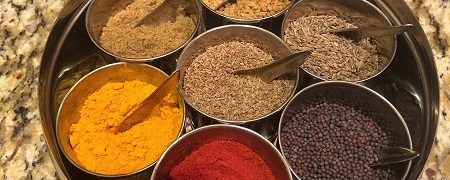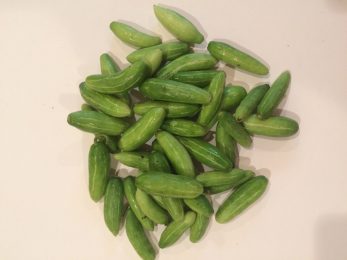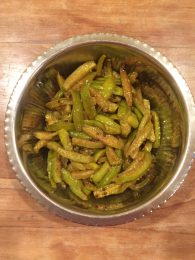Prep time:
Cook time:
Total time:
Serves: 4
- 1 lb. tindola (green ivy squash)
- 3 tablespoons olive oil
- 1 teaspoon mustard seeds
- Pinch of asafetida powder
- 1 teaspoon turmeric
- 1 teaspoon chili powder
- 1 teaspoon dhana-jeeru (spice blend of coriander and cumin powder)
- 1 teaspoon salt or to taste
- ½ teaspoon sugar or to taste
- Soak tindola in water in a mixing bowl. Remove ⅛ inch of from both ends. Cut tindola in half and slice into two to three slices. Transfer to colander.
- In a wok or a frying pan, heat oil on medium high heat, about 2 minutes. Add mustard seeds and let them sizzle, 30 to 40 seconds. Lower the heat to medium. Add turmeric, chili powder and asafetida. Add tindola, season with salt and stir everything well. Cover and let tindola cook for 10-12 minutes or until tindola are tender, stirring occasionally.
- Once tindola are cooked, add dhana-jeeru and sugar. Stir everything and let it cook uncovered on low heat until tindola become almost dry, about 5 to 7 minutes. Serve warm with any type of Indian flat bread.


